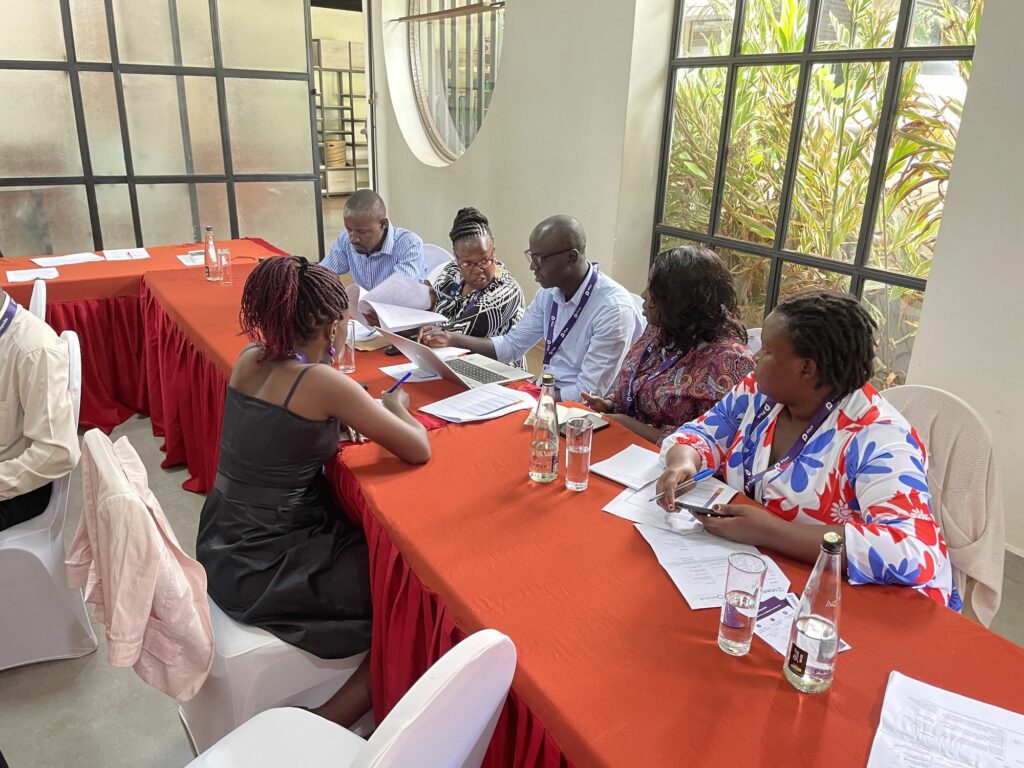
By Lucy Aird for ReLAB-HS
In Uganda approximately 6.8 million people experience conditions that could benefit from rehabilitation. Yet, availability of services is a considerable challenge. A critical contributing factor to these gaps in services is the limited workforce capacity to service increasing rehabilitation needs. Learning, Acting, and Building for Rehabilitation in Health Systems (ReLAB-HS) is responding to identified needs by strengthening the rehabilitation workforce, which is key to functioning health systems.
In collaboration with international rehabilitation professionals, ReLAB-HS has developed an international rehabilitation education and training toolkit (IRETT) to support regulation, education, and training initiatives. The tools within the IRETT are designed to be globally relevant and are accompanied by guidance to facilitate adaptation to any specific local context and to support the identification of opportunities for sustainability and scale.
In Uganda, ReLAB-HS has introduced the IRETT to professional associations and training institutions, spurring actions to strengthen professional regulation, academic programs, and professional development opportunities. This collaborative action, which utilizes international mentors, has two main objectives:
To advance collaborative efforts, ReLAB-HS organized an in-person meeting in Kampala with the representatives from the professional associations for physiotherapy, occupational therapy, speech and language therapy, and prosthetics and orthotics, plus three academic training institutions. Using the Professional Regulation Reflection Tool of the IRETT, a structured guide to support the reflective review of regulation processes and policy for rehabilitation professions, professional association members determined actions for developing continuing education plans for each profession. Similarly, program directors that represent each rehabilitation profession at the universities that deliver rehabilitation training used the Academic Program Reflection Tool to systematically review and update academic programs in relation to their institution’s specific needs.
In addition to producing specific actions to take to strengthen professional regulation and formal entry-level education in Uganda, the meeting served as the first time professional associations collaborated interprofessionally on such a significant project. Motivated by this experience, members of the professional associations made plans to formalize the collaboration by creating a national rehabilitation alliance of the associations to work together towards regulation activities. Training institution representatives were also very engaged in working together, especially in working towards advancing academic programs from diploma-level programs to bachelor’s degree programs, or from bachelor’s degree programs to master’s degree programs. Another critical outcome was that the group agreed to collaborate to deliver a program of CPD for their members, demonstrating their commitment to sustaining high professional standards.
By implementing tools and resources that enable academic institutions and professional associations to critically reflect on the rehabilitation profession “ecosystem,” ReLAB-HS is supporting representatives of these groups to devise plans with articulated actions that will strengthen and increase opportunities for in-service and pre-service rehabilitation education, while also strengthening policy around education of rehabilitation professionals. By developing national education frameworks, aligning academic programs for rehabilitation with international standards, and by providing more opportunities for CPD, rehabilitation profession stakeholders in Uganda will strengthen the rehabilitation workforce, increasing the number of skilled providers and improving the quality of services.
Working together, the professions can develop national interprofessional policies and frameworks for education and regulation, and they will have a stronger voice to influence change. The ongoing work will ultimately strengthen the rehabilitation workforce, increasing the number of skilled providers and improving the quality of services.